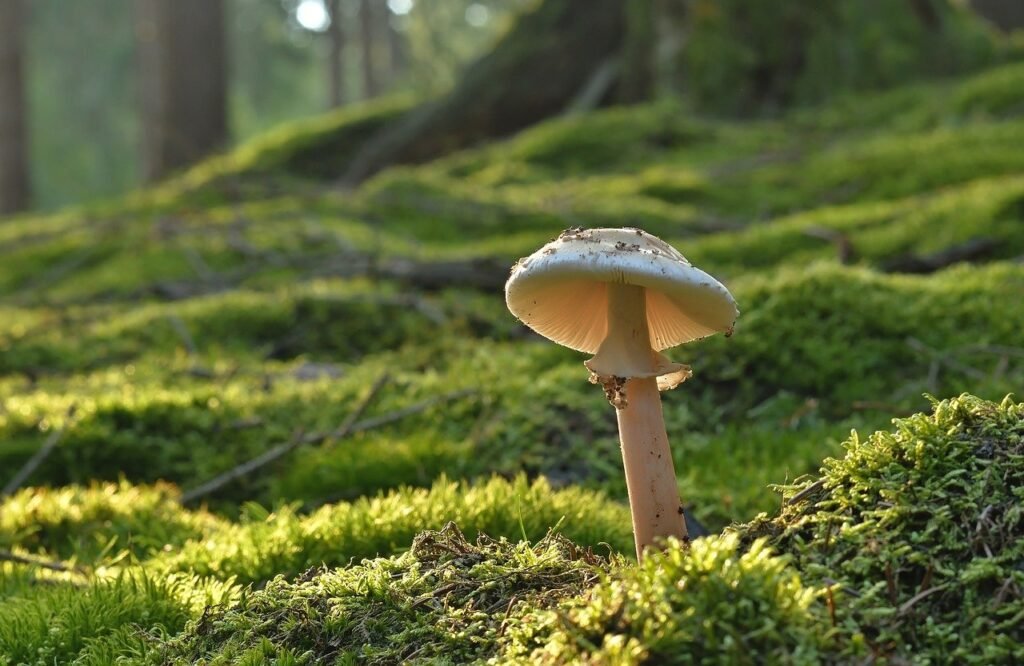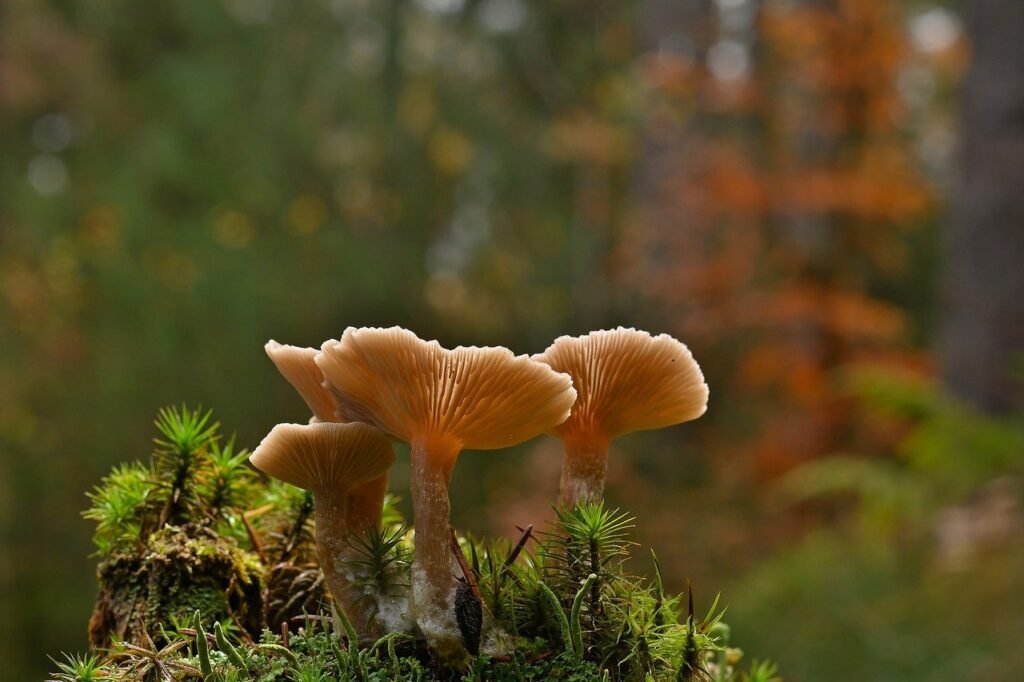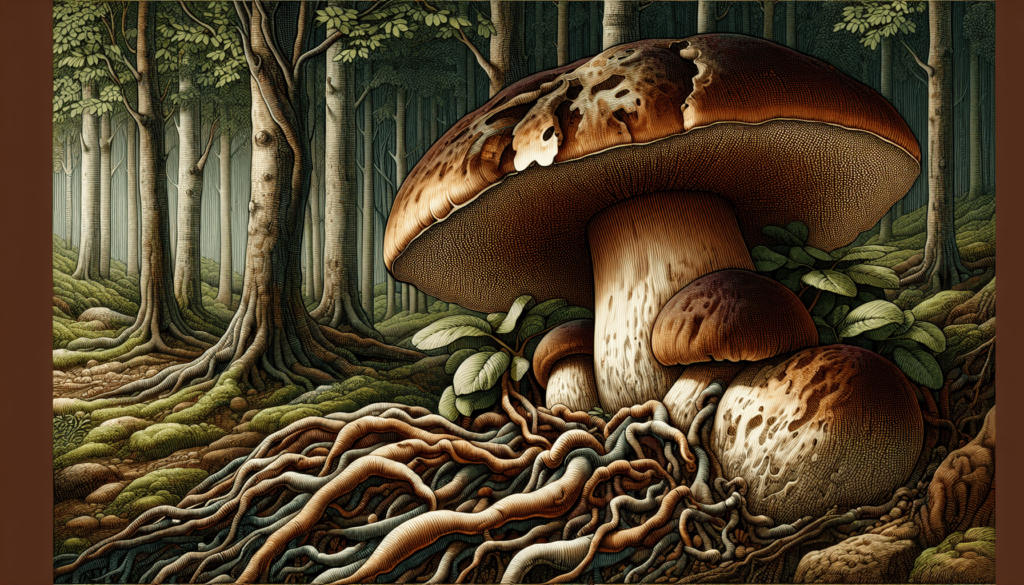Step into the secret world of Boletus Edulis, a fascinating and highly regarded species of mushroom. With its distinctive appearance and unique flavors, this mushroom has captivated the taste buds of many mushroom enthusiasts around the globe. Embark on a journey through its mysterious habitat, unravel its intriguing characteristics, and discover the valuable secrets hidden within this beloved culinary treasure. Get ready to explore the enchanting world of Boletus Edulis, where every bite reveals a delightful surprise.
Description of Boletus Edulis
Boletus Edulis, also known as the King Bolete or Penny Bun, is a highly prized edible mushroom that belongs to the genus Boletus. It is easily recognizable due to its distinct physical characteristics and has been treasured by mushroom enthusiasts and culinary experts for centuries.
Physical Characteristics
Boletus Edulis has a cap that ranges in size from 7 to 25 centimeters in diameter, with a smooth and velvety texture. The color of the cap can vary from light brown to dark brown, depending on its age. The cap is convex when young, but as it matures, it becomes flatter and often develops cracks or depressions. The underside of the cap is covered in a sponge-like layer of tubes instead of gills.
The tubes are initially white but turn yellow as the mushroom ages. These tubes produce the mushroom’s spores, which are spread through the small pores on the bottom of the tubes. The stem of Boletus Edulis is short, thick, and solid, usually measuring between 8 and 25 centimeters in length and 2 to 8 centimeters in width. It is white or yellowish in color and often has a network-like pattern towards the base.
Habitat and Distribution
Boletus Edulis is most commonly found in deciduous and coniferous forests across Europe, Asia, and North America. It prefers well-drained soil and often grows in close association with certain tree species, including pine, oak, and birch. This mushroom is typically found in the late summer and early autumn, appearing often after a period of rainfall.
Culinary Uses
Boletus Edulis is renowned for its exceptional taste and versatile culinary uses. Its firm and meaty texture, combined with a rich and nutty flavor, makes it a perfect choice for a wide range of dishes. From soups and stews to risottos and pastas, Boletus Edulis adds a delightful depth of flavor that is sure to impress any palate.
In traditional European cuisine, it has been highly regarded as a gourmet delicacy. It can be sautéed, grilled, or roasted to bring out its robust flavors. The flavor and aroma of Boletus Edulis can also be enhanced through drying or pickling, allowing it to be enjoyed throughout the year.
Boletus Edulis in Folklore and Culture
Mythical and Symbolic Significance
Boletus Edulis holds a special place in folklore and cultural traditions across different regions. In some cultures, it is believed to possess mystical qualities and is associated with good luck, prosperity, and even immortality. It has been revered as a symbol of abundance and fertility, with ancient myths often connecting it to the Earth’s bountiful harvests.
Historical Uses
Throughout history, Boletus Edulis has been used for various medicinal purposes due to its believed health benefits. Historical records reveal its use in traditional remedies, including treating digestive disorders, regulating blood pressure, and strengthening the immune system. While its medicinal properties continue to be explored, its relevance in traditional medicine highlights the long-standing cultural significance of this remarkable mushroom.
Cultural Relevance
Boletus Edulis holds a special place in the culinary traditions of many cultures around the world. It is highly sought after by chefs and gourmet food enthusiasts for its distinct flavor profile and culinary versatility. In some regions, the annual arrival of Boletus Edulis is celebrated with festivals and gatherings, where locals come together to share recipes, cooking techniques, and stories associated with this esteemed mushroom.

Boletus Edulis and Mycorrhizal Symbiosis
What is Mycorrhizal Symbiosis?
Mycorrhizal symbiosis refers to a mutually beneficial relationship between certain fungi and plants. In this symbiotic association, the fungus colonizes the roots of the host plant, forming a specialized structure known as mycorrhizae. The mycorrhizae enable the exchange of nutrients between the plant and the fungus, enhancing the nutrient absorption capabilities of the plant while receiving organic carbon compounds from the plant in return.
Boletus Edulis as an Important Mycorrhizal Partner
Boletus Edulis plays a vital role in mycorrhizal symbiosis, particularly with specific tree species. Its mycorrhizae form associations with the roots of various trees, facilitating the exchange of nutrients and water. In return, the fungus receives carbohydrates produced by the trees through photosynthesis. This mutualistic relationship is essential for both the fungus and the trees, improving the overall health and survival of the ecosystems they inhabit.
Harvesting and Preparing Boletus Edulis
Identifying Boletus Edulis
Proper identification is crucial when harvesting Boletus Edulis, as there are several poisonous lookalikes. To distinguish it from other mushrooms, examine the physical characteristics mentioned earlier, paying particular attention to the sponge-like layer of tubes on the underside of the cap and the presence of a network-like pattern on the stem. Consulting field guides or seeking guidance from experienced foragers can also aid in accurate identification.
Harvesting Methods
When harvesting Boletus Edulis, it is important to do so sustainably, ensuring the longevity of the mushroom and its ecosystem. It is recommended to cut the mushroom at the base of the stem using a sharp knife, rather than pulling it from the ground. This method prevents damage to the mycelium, the underground network of fungal threads that allows the mushroom to grow.
Cleaning and Preparing Techniques
Once harvested, it is crucial to clean Boletus Edulis properly before consuming. To remove dirt and debris, gently brush the caps and stems with a soft brush or cloth. Avoid washing them under running water, as the mushroom can absorb excess moisture and lose some of its flavor.
To prepare Boletus Edulis for cooking, slice the mushroom into desired shapes and sizes. It is often recommended to cook this mushroom before consumption to enhance its flavor and digestibility. Cooking methods such as sautéing, grilling, or roasting help bring out the mushroom’s unique taste and texture.

Health Benefits and Nutritional Value
Antioxidant and Anti-Inflammatory Properties
Boletus Edulis contains various bioactive compounds that are believed to exhibit antioxidant and anti-inflammatory properties. These compounds, including phenolic compounds and beta-glucans, may help protect against oxidative stress and reduce inflammation in the body. While further research is needed to fully understand the extent of its health benefits, consuming Boletus Edulis as part of a balanced diet may contribute to overall well-being.
Rich in Vitamins and Minerals
Boletus Edulis is a nutritional powerhouse, rich in vitamins and minerals. It is an excellent source of essential minerals such as potassium, phosphorus, copper, and selenium. Additionally, it provides vitamins such as vitamin B5, vitamin B6, and vitamin D. Including Boletus Edulis in your diet can help supplement your nutrient intake and support a healthy lifestyle.
Boletus Edulis Conservation and Sustainable Harvest
Threats to Boletus Edulis
Boletus Edulis faces various threats that impact its population and distribution. Habitat loss due to deforestation, urbanization, and climate change poses a significant risk to this mushroom’s survival. Additionally, overharvesting and improper collection methods can harm the mycelial network, leading to a decline in Boletus Edulis populations.
Conservation Efforts
Efforts to conserve Boletus Edulis are increasingly important to ensure its long-term survival. Many organizations and individuals are working towards protecting its natural habitats and raising awareness about sustainable harvesting practices. By promoting responsible foraging and educating the public about the importance of preserving this species, we can contribute to the conservation of Boletus Edulis and its unique ecosystems.
Sustainable Harvesting Practices
To ensure the sustainable harvest of Boletus Edulis, it is crucial to follow responsible foraging practices. These include only harvesting mature mushrooms, leaving small or damaged specimens behind to allow them to contribute to the ecosystem’s natural processes. Avoiding over-harvesting and spreading awareness about the importance of conservation can help maintain healthy populations of Boletus Edulis for future generations.

Poisonous Lookalikes and Potential Risks
Identifying and Avoiding Poisonous Lookalikes
While Boletus Edulis is safe to consume when properly identified, it is important to be aware of its poisonous lookalikes to avoid potential risks. Some species, such as the Devil’s Bolete (Rubroboletus satanas) or the Bitter Bolete (Tylopilus felleus), resemble Boletus Edulis but contain toxins that can cause gastrointestinal distress or other adverse effects. Thoroughly educating oneself and seeking expert guidance when in doubt is crucial to prevent accidental ingestion of toxic mushrooms.
Potential Health Risks
When harvesting and consuming any wild mushroom, including Boletus Edulis, it is essential to prioritize food safety. Some individuals may have allergies or sensitivities to certain mushrooms, and improper handling or consumption can lead to adverse reactions. To minimize potential health risks, it is recommended to consume small quantities when trying a new mushroom for the first time and ensure proper cooking and preparation techniques.
Cultivating Boletus Edulis
Conditions for Successful Cultivation
While Boletus Edulis is primarily a wild mushroom, efforts are underway to cultivate it in controlled environments. Successful cultivation requires specific conditions that mimic the mushroom’s natural habitat. These conditions include the right substrate, temperature, moisture levels, and mycorrhizal partners. Although cultivating Boletus Edulis is challenging, ongoing research and advancements in cultivation techniques offer promising possibilities for its future availability.
Methods and Techniques
Various techniques, such as indoor cultivation using containers or outdoor cultivation in appropriate forest environments, are being explored to cultivate Boletus Edulis. These methods involve inoculating a substrate, usually a wood-based medium, with mycelium and providing the necessary environmental conditions for growth. While still in its experimental stages, the cultivation of Boletus Edulis showcases the potential for sustainable and controlled production in the future.

Boletus Edulis as a Research Subject
Scientific Studies and Discoveries
Boletus Edulis serves as a fascinating subject of study for scientists and researchers. Recent studies have focused on understanding its genetic diversity, ecological roles, and cultivation methods. Through the use of advanced genetic techniques and molecular analysis, valuable insights have been gained into the complex interactions between Boletus Edulis, other organisms, and the environment.
Medical Applications and Potential
The bioactive compounds present in Boletus Edulis have attracted attention for their potential medical applications. Preliminary research suggests that these compounds may possess anti-cancer, anti-inflammatory, and antimicrobial properties. However, further studies are needed to fully explore and understand the therapeutic potential of Boletus Edulis, paving the way for future developments in medicine.
Conclusion
Appreciating the Enigmatic Beauty of Boletus Edulis
Boletus Edulis, with its captivating physical characteristics and rich culinary attributes, continues to captivate and inspire people around the world. From its mythical and symbolic significance to its nutritional value and potential health benefits, this mushroom holds a special place in both folklore and scientific research.
Continued Research and Conservation Efforts
As our understanding of Boletus Edulis deepens, it is crucial to continue research efforts to unlock its full potential and conserve its natural habitats. Cultivation techniques offer hope for sustainable availability, while responsible harvesting and conservation practices ensure the preservation of this enigmatic mushroom for generations to come. By appreciating and protecting Boletus Edulis, we can maintain the delicate balance of nature and continue to enjoy the wonders it has to offer.

